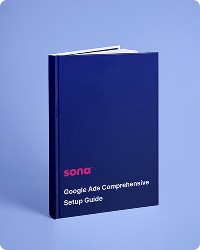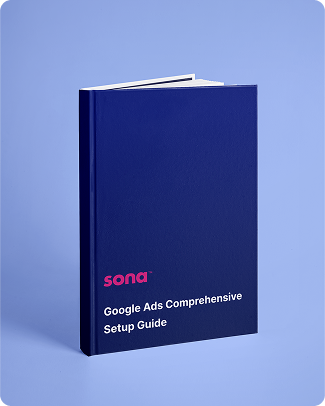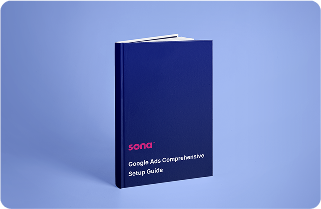

Engage prospects with a scan and streamline customer engagement with FREE QR code marketing tools by Sona – no strings attached!
Create a Free QR CodeFree consultation

No commitment

Engage prospects with a scan and streamline customer engagement with FREE QR code marketing tools by Sona – no strings attached!
Create a Free QR CodeFree consultation

No commitment
In today’s digitally driven world, QR codes have evolved from a novelty to a strategic powerhouse in bridging offline engagement with online action. For sandblasting services, QR codes provide a frictionless way to elevate surface preparation marketing, accelerate customer engagement, and streamline operations without requiring additional apps or complicated workflows. They put the next step in the customer journey one scan away, removing friction at the exact moment interest peaks. For a broader primer, see Sona QR’s guide to QR codes in marketing.
Sandblasting companies struggle to track and convert high-value prospects who interact with their brand in the physical world: on job sites, at trade booths, or in the yard where equipment is staged. Gaps like missing decision-maker details or untraceable print materials make it hard to attribute revenue, prioritize follow-up, or prove ROI. QR codes capture those moments and connect them to your digital systems, helping identify, qualify, and nurture prospects who otherwise disappear. To connect these field touchpoints to pipeline and ROI, explore Sona’s blog on offline attribution.
QR codes also enable providers to replace analog touchpoints with interactive experiences: paper brochures become dynamic galleries, static safety sheets become real-time documentation, and manual forms become mobile-first workflows. By turning every physical interaction into a digital journey, sandblasting companies can unlock real-time data, automate follow-up, and differentiate their service in a competitive market. For niche examples in this industry, see this abrasive blasting QR guide.

Sandblasting providers often wrestle with slow, analog workflows that block engagement and create missed opportunities. Job intake forms get buried in trucks, safety acknowledgments are recorded late, and highly qualified prospects walk away without leaving contact details. These issues delay service delivery and allow competitors to engage first, especially when your brand has no way to follow up in real time.
Modern QR solutions bridge these gaps by linking physical touchpoints to digital outcomes. With a scan, clients can request estimates, download compliance documentation, submit incident reports, or view health and safety protocols. Teams can collect data instantly, act on it faster, and keep everything in sync with sales and operations systems. Learn what this looks like in Sona QR’s product overview.
Here’s how to put this into practice:
With the right QR platform, every scan leaves a digital footprint that is visible to marketing, safety, and operations. Platforms like Sona QR centralize these interactions and attach them to customers and jobs, creating a measurable bridge between field engagement and business results.
When you modernize workflows like these, you address chronic industry frustrations: lost paperwork, slow lead routing, and unreliable compliance tracking. You also create a seamless engagement experience that respects how people prefer to act in the moment, from scanning a truck wrap to submitting a punch-list item on-site. Sona QR is built to support every step of this transformation, from code generation and branding to analytics, integrations, and retargeting.

Sandblasting teams often invest heavily in fleet graphics, trade booths, brochures, and yard signage. Yet most of the people who engage with these materials remain anonymous. They read, nod, and walk away without leaving a trace. This disconnect between impressive in-person engagement and measurable digital action drains pipeline and weakens attribution. It also makes it difficult to justify spend or optimize campaigns.
QR codes provide a direct answer. They convert physical interest into measurable actions: requests for quotes, access to compliance documents, booking service windows, or survey responses. Instead of hoping someone types a long URL or saves a business card for later, a single scan starts a branded, mobile-first experience that delivers next steps while intent is high.
For sandblasting, this means better visibility across your most common materials. Include QR codes on estimate packets and post-job reports to collect reviews, embed them on abrasive packaging to surface handling instructions and certifications, and add them to bid documents to drive stakeholders to a project gallery. The result is a connected customer journey that links every physical moment to a digital insight.

Sandblasting operations rely on timely access to updated information. Printed safety sheets, hard-copy permits, and static business cards often get misplaced or outdated, introducing risk and inefficiency. QR code formats provide a flexible alternative that makes content accessible, current, and trackable.
Choose the formats that match your goals and environments:
Dynamic QR codes are especially useful when content changes frequently, such as safety procedures, training videos, or rotating case studies. Static codes are better for permanent references like a facility Wi-Fi network or a non-changing operating manual. Managing both in a system like Sona QR ensures version control, consistent branding, and full analytics.

Growth often hides in everyday assets that people already see and touch. Anonymous foot traffic around job sites, overlooked invoice follow-ups, and untracked equipment interactions all represent chances to capture demand and improve the customer experience. The goal is to place QR codes wherever interest peaks and where a digital step would remove friction.
Start with high-leverage placements that your audience engages with most:
As you deploy, monitor which assets consistently generate scans and conversions. Shift spend toward your top-performing placements and refine calls-to-action where engagement lags. Over time, this creates a repeatable growth engine fueled by measurable, real-world interactions.

In sandblasting, timing is everything. Safety checks must be recorded before work begins, estimate details must be captured while interest is fresh, and post-job feedback should be collected while results are visible. Paper processes and “we will enter it later” habits often result in missing data and delayed action. QR-driven workflows eliminate those gaps.
Real-world use cases include:
Each use case replaces a specific analog pain point with a measurable, digital action. Teams become more responsive, customers feel informed, and leaders gain visibility into what is working across jobs, crews, and campaigns.
Anonymous interest is a silent revenue killer. Prospects scan your yard signage with their eyes but never reach your website. An executive sees your fleet graphics but does not remember the URL. With QR codes, every scan creates a signal you can segment and act on, turning offline curiosity into retargetable audiences.
Begin by mapping codes to each stage of your buyer journey:
Practical audience distinctions for sandblasting include property managers seeking concrete cleaning, steel fabricators needing surface prep for coatings, municipalities requiring graffiti removal, and contractors exploring lead abatement. When these contexts are captured at the moment of scanning, your retargeting and sales prioritization become far more precise than any broad demographic list.
QR codes do more than link to a page. They unify your physical and digital campaigns by capturing engagement at the source and tying it to measurable outcomes. This lets you optimize the mix across brochures, vehicles, events, invoices, and digital signage with real data instead of intuition.
Here is how QR codes enhance common channels in sandblasting:
QR codes serve as the offline onramp to your digital marketing engine. A centralized platform such as Sona QR lets you manage codes at scale, monitor performance across placements, and sync scan data with your CRM and ad platforms. The result is a connected pipeline that ties real-world attention to revenue.
A well-structured rollout ensures your QR deployments capture the right data, integrate cleanly with sales and safety systems, and lead to better conversion rates over time. Use this checklist to plan, launch, and optimize for impact in sandblasting environments.
Identify high-impact moments where manual processes cause lost data or delayed action. Examples include demo bookings at construction expos, safety logins at job sites, incident reporting on containment barriers, and post-service review requests on invoices.
Choose the format that fits your goal. Dynamic codes are best for trackable links and campaigns that may need updates; static codes suit permanent resources like a fixed PDF manual.
Your code must be scannable in rugged environments and inviting enough to earn the scan. Branding and context matter.
Roll out in phases, starting where the pain is greatest and the audience is highest intent: site signage, safety boards, trade show displays, marketing kits, and financial documents.
Analytics turn scans into insights you can operationalize. Watch usage patterns and iterate quickly.
Following these steps ensures that manual workflows, limited campaign visibility, and slow follow-up are replaced by measurable, ongoing improvement across your marketing and operations.
Sandblasting teams often struggle to connect offline engagement to closed revenue. Jobsite signage, brochures, and after-service leave-behinds may produce interest, yet without a data trail, it is hard to tell which assets deserve more budget or which messages resonate.
QR analytics close this gap by capturing the who, where, and when behind scans and tying those signals to downstream actions:
The result is clarity. You can demonstrate which campaigns and assets are moving the needle, how quickly scanners convert, and where to improve content or placement. Instead of counting impressions, you track pipeline and revenue tied to real-world engagement.
Initial QR deployments often spark early wins, but sustained results require thoughtful segmentation, strong CTAs, and automation. The following best practices ensure your codes continue to drive engagement and measurable outcomes:
These tactics create a feedback loop in which every scan informs better content, smarter targeting, and faster follow-up. Over time, your QR program becomes a core part of how you attract, serve, and retain customers while maintaining regulatory readiness.
QR codes are more than a shortcut; they are a strategy for turning every physical asset into a digital entry point and every moment of interest into a measurable action. In sandblasting services, they address persistent challenges such as missed lead opportunities, compliance risk, and untracked campaign performance. By connecting equipment, signage, vehicles, and collateral to mobile-first experiences, you capture demand at the source and guide it into systems where your team can act.
The payoff is a connected customer journey from first scan to finished project. Prospects move smoothly from awareness to estimate, crews complete safety tasks with reliable records, and managers attribute revenue to the campaigns and assets that drove it. Each scan becomes a signal you can measure, segment, and optimize.
With Sona QR, you have everything required to generate branded codes, manage destinations, track performance, and sync scan data with your CRM and ad platforms. Start with a single high-impact use case, expand to your top placements, and let real-world analytics guide your next iteration. As you do, you will replace analog uncertainty with digital clarity and turn field engagement into sustained business growth. Start creating QR codes for free: get started.
QR codes have revolutionized sandblasting services by transforming traditional project workflows into seamless, interactive experiences. Whether it’s streamlining job tracking, enhancing client communication, or providing instant access to detailed service information, QR codes eliminate guesswork and manual follow-ups, turning every scan into a powerful engagement tool. Imagine clients effortlessly accessing maintenance guides or project specs right from the sandblasted surface, boosting satisfaction and repeat business.
With Sona QR, you can create dynamic, trackable QR codes in seconds, update content instantly without reprinting, and link every scan to actionable data that drives operational efficiency and customer loyalty. No missed updates, no lost information—just smarter service delivery that sets your sandblasting business apart. Start for free with Sona QR today and transform every surface into a gateway for growth and lasting client relationships.
Sandblasting is a surface preparation method that uses abrasive blasting to clean or texture surfaces by propelling abrasive materials under high pressure.
Sandblasting services include surface preparation for coatings, concrete cleaning, graffiti removal, lead abatement, and equipment maintenance support among others.
Sandblasting prepares surfaces effectively by removing contaminants, enabling coatings to adhere properly, improving safety compliance, and reducing downtime with support tools.
Choose providers that use modern workflows, offer real-time safety resources, provide proof of certifications and reviews, and utilize digital tools like QR codes for streamlined communication.
Safety measures include digital access to MSDS sheets, silica exposure guidelines, PPE requirements, and incident reporting via QR codes to ensure compliance and reduce risk.
QR codes connect physical assets like equipment, signage, and brochures to digital workflows, enabling instant data capture, safety compliance, quote requests, and customer engagement.
Common QR code formats include web links, forms for quotes and incident reports, vCards for contact sharing, SMS or email triggers, app downloads, and Wi-Fi access.
Effective placements include equipment labels, invoices, field signage, trade show materials, direct mail flyers, fleet vehicle wraps, and yard signage.
They use centralized analytics platforms to monitor scan data by time, location, device, and asset, linking scans to outcomes like quotes, payments, and safety completions.
Steps include choosing a use case, selecting the QR code type, designing and testing the code, deploying it across key channels, and continuously tracking and optimizing performance.
QR codes enable real-time digital check-ins, access to safety protocols, and instant submission of compliance checklists, which reduces administrative burden and improves audit readiness.
Yes, QR codes convert physical interest into measurable actions such as quote requests and feedback submission, helping capture qualified leads and accelerate follow-up.
Dynamic QR codes allow updating destinations without reprinting, tracking scan analytics, and adding campaign parameters, making them ideal for changing content and marketing flexibility.
They place QR codes on leave-behind cards or invoice footers that prompt customers to submit star ratings, testimonials, and photos, generating fresh social proof and early service alerts.
QR codes digitize manual processes such as job intake, incident reporting, and safety acknowledgments, enabling instant data capture, routing, and synchronization with CRM and operations systems.
Use Sona QR's trackable codes to improve customer acquisition and engagement today.
Create Your FREE Trackable QR Code in SecondsJoin results-focused teams combining Sona Platform automation with advanced Google Ads strategies to scale lead generation

Connect your existing CRM

Free Account Enrichment

No setup fees
No commitment required

Free consultation

Get a custom Google Ads roadmap for your business






Launch campaigns that generate qualified leads in 30 days or less.
